An Early Spring menu
All the recipes, pro tips, and ideas I couldn’t wait to share with you while cooking an early spring meal for friends.
Finally, last week I could plan a whole lunch with friends, carefully choosing what to serve from appetizer to dessert, without using the meal as an excuse to test the next recipes for the cookbook, or recycling leftovers from photo shootings - I’m sorry if you’ve been my Guinea pig in the past, I’ll make sure to make amends inviting you again to share a meal with us!
While I was cooking, I was mentally noting down all the recipes, pro tips, and ideas I couldn’t wait to share with you as I felt a rush of inspiration running through my veins, as vital and enlivening as I could not remember having experienced recently.
So, let’s start with the most important advice: plan your meal in advance, and don’t stuff your friends with food.
1) Plan your meal in advance.
Bake your bread and freeze it. Prepare your fresh pasta and freeze it. The freezer and the fridge are your best friends. This will allow you to fully enjoy your meal with friends with a full fridge, a clean kitchen, and an empty dishwasher. It is a win-win situation.
2) Don’t stuff your friends with food, they are not geese.
I learnt this the hard way when the first times I hosted dinner parties with friends, I would create complex menus with several courses, something more fit for a presidential dinner than for an informal gathering.
When my friends would ring the bell, I was already exhausted, my kitchen a mess, and part of the food still needed my attention. This meant that I would continuously jump from the table where we were having dinner to the kitchen, missing part of the conversations and almost sleeping on my feet for the rest of the time. But, at the end of the day, my friends could literally roll out of the gate, I had plenty of leftovers, and a kitchen to clean.
Now I try to prepare most of the food in advance and plan a seasonal menu that can tickle your taste buds without killing you with a non-stop series of unrelated dishes.
It makes you come back, ask for something to bring home, and it leaves you happy and satisfied.
Today I’m sharing the menu I planned for a gathering with friends we hosted last Sunday: we were six adults at the party, with two toddlers who just nibbled on what we were having - Livia loves the semolina bread with olives!
Let me know in the comments if you like this formula because, as the season proceeds, I might share more ideas from informal gatherings and cooking classes, giving you ideas, recipes, and some pro tips on organising the whole meal in advance.
The appetizers
When planning a menu, I like to have one main course and an array of appetizers, with plenty of vegetables, as they are my favourite part of the meal.
They showcase the season, set the tone of a meal, create a relaxed atmosphere, and bring an immediate sense of conviviality.
Green olive and fennel pollen semolina bread
My 25% Southern Italian blood influences my preferences for semolina bread rather than the bland, Tuscan bread. Chewy, intensely aromatic, with a dense yellow crumb, it is my go-to bread when I bake it at home with my sourdough starter.
I jazzed it up with fennel pollen and pitted green olives. Consider baking two loaves as they will disappear quickly.
Get the green olive and fennel pollen semolina bread recipe here (paywalled recipe).
PRO TIP. Bake the semolina bread a few days in advance, let it cool down completely, then freeze it in a plastic bag. A few hours before the meal with your friends, remove it from the freezer and thaw it at room temperature. Reheat it briefly in a hot oven, then slice it and bring it to the table. It’s like just baked.
Alternative. Try also the sourdough pane Toscano from the blog archive.
A Cheeseboard
A cheese board is always a preferable choice when hosting a meal with friends, as you can play with the ingredients using staples from your pantry and indulge in some of your favourite cheese (yes, this is when I buy fresh, creamy goat cheese). Cheese is usually an appetiser in the Italian food tradition, not a course to serve at the end of a meal.
For our recent meal, I collected a fresh goat cheese from Piedmont and a wedge of aged pecorino from Pienza at the local supermarket - sometimes, if you browse the cheese alley with some extra care, you find little gems - my spicy tomato jam (beware, it is addictive) and a jar of home-cured black olives from the pantry, and fresh fava beans at the market.
A good cheeseboard is easy to assemble, fosters chats and conviviality, and set the tone for a superb meal.
Read on the blog an article about my favourite cheesemakers in Tuscany.
Carrot hummus
Years ago, attending a food blogger conference in London, I found myself with a group of friends in one of Ottolenghi’s new restaurants. It was the first time I heard about him, and the first time I experienced a mezze style meal. I brought back an infinite love for a dip of carrot hummus I had tried from that meal, licking the bowl clean—burnt orange, smoky, sweet, spiced, intense, addictive as an appetizer.
Get the recipe for the smoked carrot hummus here (paywalled recipe).
PRO TIP. If you’re planning to bake the bread a couple of days in advance, once you remove the bread roast the carrots, as to take advantage of the residual heat of the oven. Prepare the carrot hummus and keep it in an airtight container in the fridge for up to 4 days. Sprinkle with dukkah and drizzle with extra virgin olive oil just before serving.
Alternative. Try the artichoke and green olive tapenade from the blog archive.
Beetroot carpaccio
Carpaccio is a dish of meat or fish, sliced or pounded thin, served raw, usually as an appetizer. Veal carpaccio, for example, is typically topped with arugula, drizzled with extra virgin olive oil and lemon juice, and served with shaved Parmigiano Reggiano.
This beet carpaccio has slowly carved out its place in cooking classes. However, it has also earned a place in our daily cooking. Quick to prepare, you thinly slice the beets with a mandoline and dress them in a tray with extra virgin olive oil, walnuts and dill.
In an old letter, you can find the recipe for the beetroot carpaccio (paywalled recipe).
PRO TIP. Budget at least 40 minutes a few hours before your meal to prepare the beetroot carpaccio and the artichoke carpaccio. If you have properly planned the whole meal, these are the only two recipes you have to take care of. Wear disposale gloves to slice beetroots and artchokes, as not to stain your fingers.
Raw artichoke carpaccio with shaved pecorino
When using artichokes as the main ingredient of a carpaccio, you have to choose the freshest and youngest ones you can find. Shave them thinly and dress them with your best extra virgin olive oil and lemon juice. Some shaved Parmigiano Reggiano or Tuscan pecorino will round out the dish.
This is a fresh, lemony appetizer that exalts the flavour of artichokes. Have some bread ready to mop up the olive oil left at the bottom of the plate.
Serves 4
4 fresh artichokes
1 lemon
Salt
Black pepper
Extra virgin olive oil
Fresh Tuscan Pecorino, or Parmigiano Reggiano
Clean the artichokes, removing the tough outer layers and stalks. Rub the artichoke hearts with lemon, then cut them in half and use a small spoon to remove the chokes. Thinly slice the artichoke hearts and arrange them onto a plate.
Drizzle with extra virgin olive oil and lemon juice, then season with salt and freshly ground black pepper. Finish with some shaved pecorino.
Let it sit at room temperature for at least 1 hour before serving, so the lemon will soften the artichokes.
Main course
Spinach and ricotta tortelli with guinea fowl ragù
I opted for spinach and ricotta ravioli, a classic in my family, but the strained yoghurt and spinach tortelli I shared a couple of weeks ago would work as well.
PRO TIP. Prepare the stuffed fresh pasta of your choice, arrange it on a tray dusted with semolina flour, and freeze it. When the tortelli are frozen, transfer them to a zip-log plastic bag. Cook your tortelli when they are still frozen, directly from the freezer to the pot of boiling water previously salted.
When you serve the appetizers bring a large pot of water to a boil. All you’ll have to do is leave the party for less than 10 minutes to cook the tortelli.
As for the guinea fowl ragù, I followed this recipe from the blog archive, and I had enough for our meal and to freeze for a future family lunch.
For the ragù, take your time, collect herbs and patience, and you’ll be rewarded with a rustic meat sauce that perfectly represents the peasant cooking of the Tuscan countryside. Not beef nor pork, but poultry, vegetables and time are the essential ingredients here.
PRO TIP. I had planned our meal with friends on a Sunday, so I roasted the Guinea fowl on a Thursday afternoon. On Friday I removed the meat from the bones, and made a stock with the bones, celery, carrot, and an onion. It simmered on the stove for about 2 hours, thus extracting all the gamey Guinea fowl flavour from the bones. I strained the stock and stashed it in the fridge until Saturday. On Saturday, I made the ragù. Once cold, I spooned the ragù in an airtight container and put that in the fridge for our Sunday meal. On Sunday, I just had to reaheat the ragù in a pan while the tortelli were cooking.
Dessert
I was spoiled by a tray of pastries that Valentina bought in a very good pastry shop in Florence, and an apple and almond crumble cake Claudia baked for us, so I didn’t have to think about dessert.
When working on the meal, though, I planned to make a strawberry yoghurt pannacotta, as it can be easily prepared a couple of days in advance. So keep it in the fridge up until the last minute.
Since strawberries are finally back in season here in Italy, we can top the panna cotta with a few strawberries marinated in sugar and lemon juice, which nicely echoes the tartness of the yoghurt.
Support us by joining our paid newsletter
[If you already subscribed to our newsletter, thank you!]
When you join our subscription-based newsletter, you are actively contributing to the making of Letters from Tuscany, granting us the time, energy, and resources to research, test and re-test, and photograph the recipes, to write the stories and the interviews, to film the videos that we share here. You are part of why we keep cooking, writing, and sharing, so thank you.
What you missed recently: Green olive and fennel pollen semolina bread, Carrot hummus, Bow-tie fresh green and yellow fresh pasta with peas, prosciutto, and cream, Florentine rice fritters.
You will have complete access to the whole archive of already published recipes and stories whenever you decide to join us.

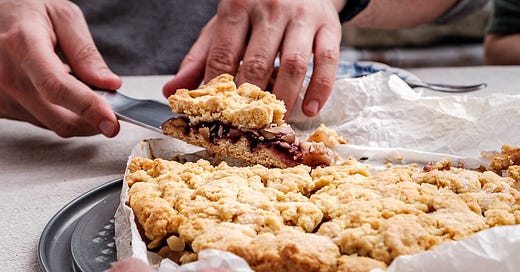


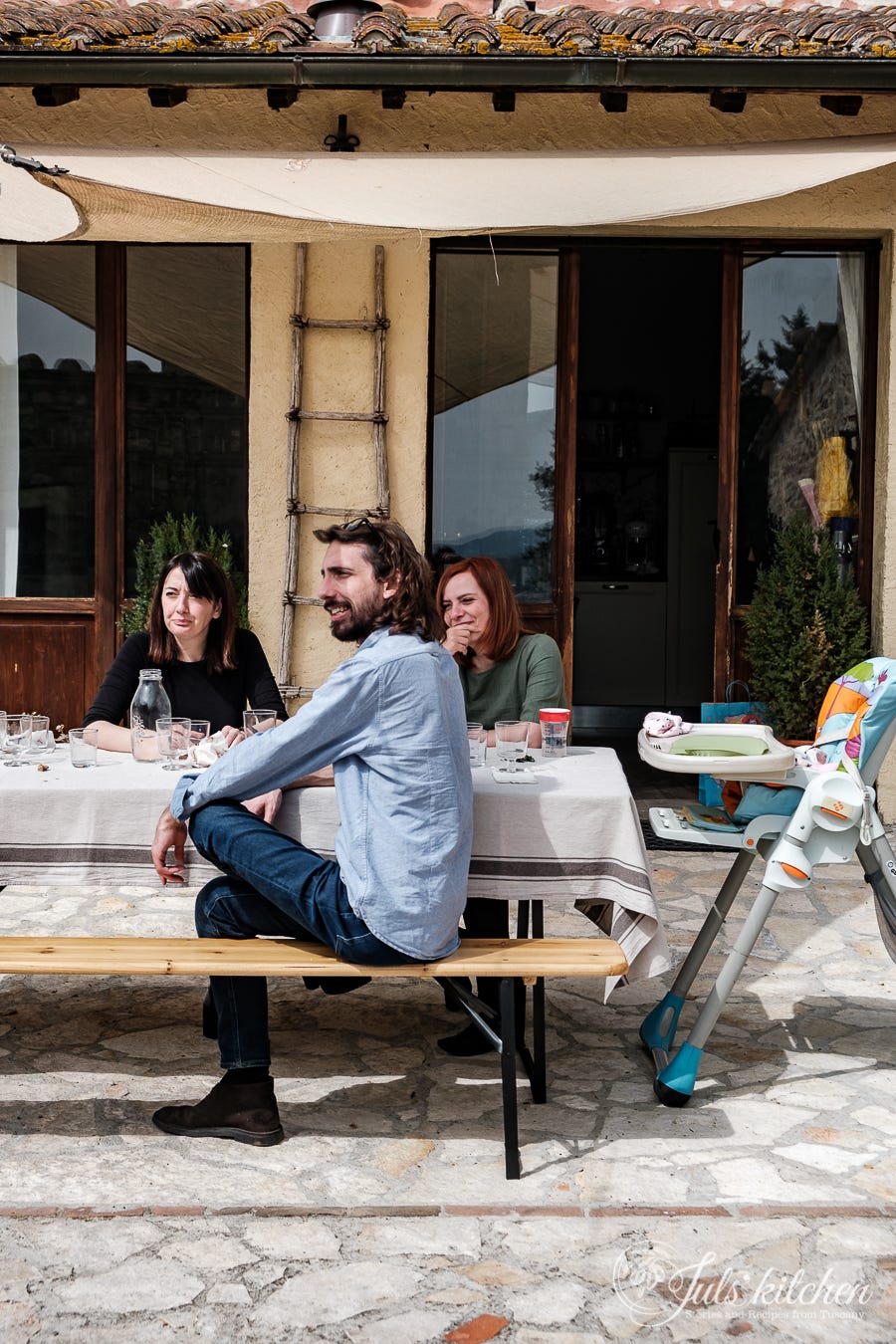
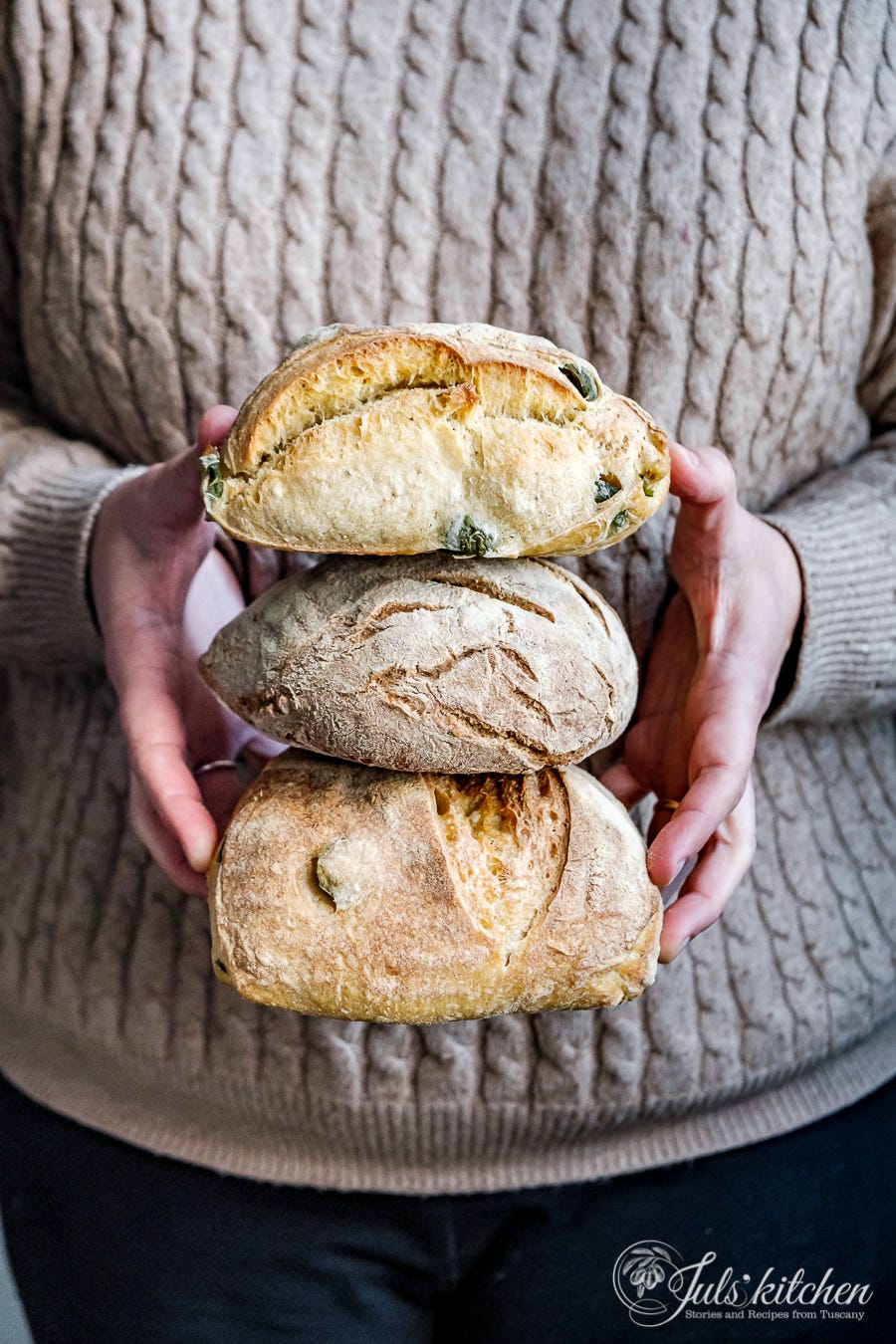

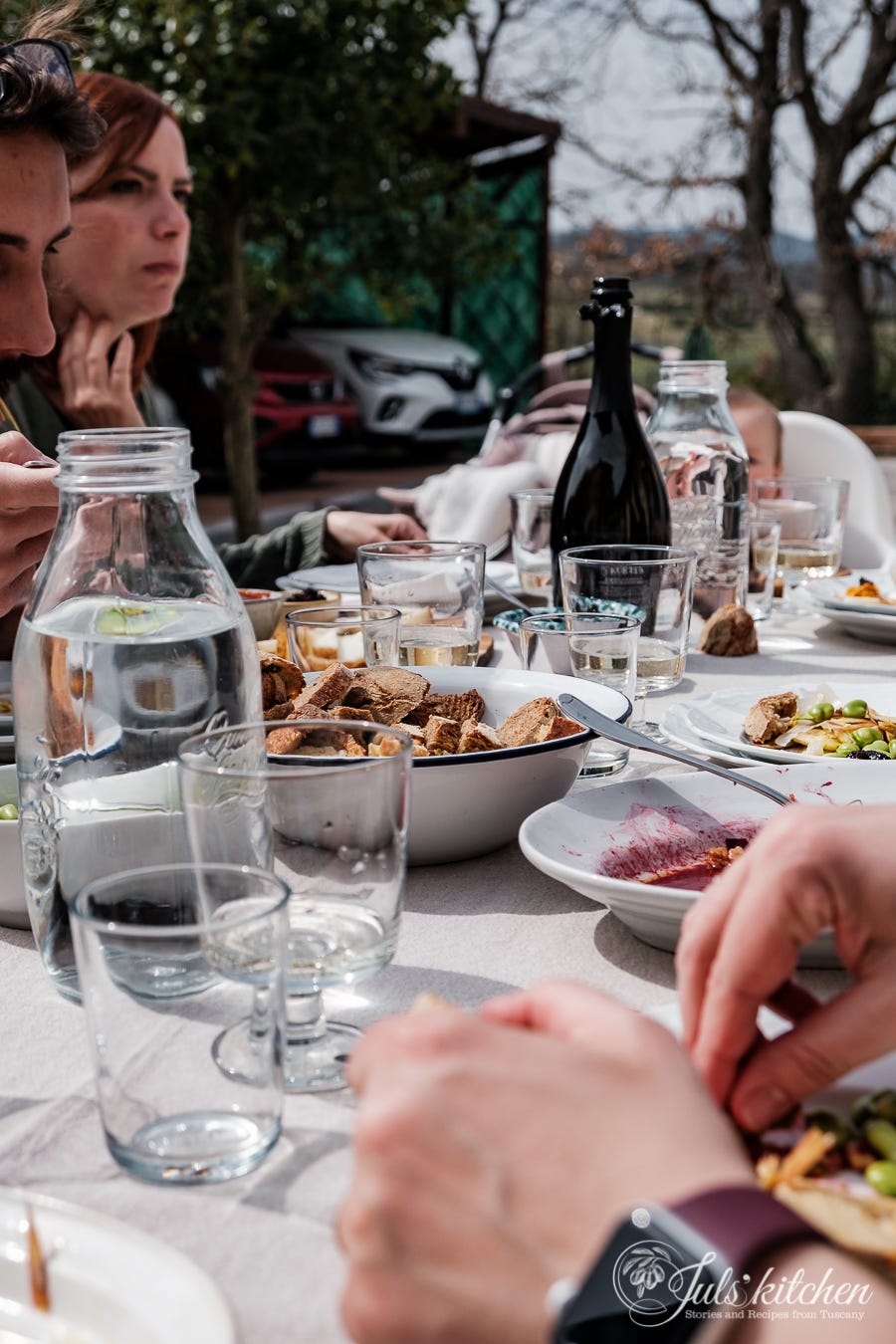

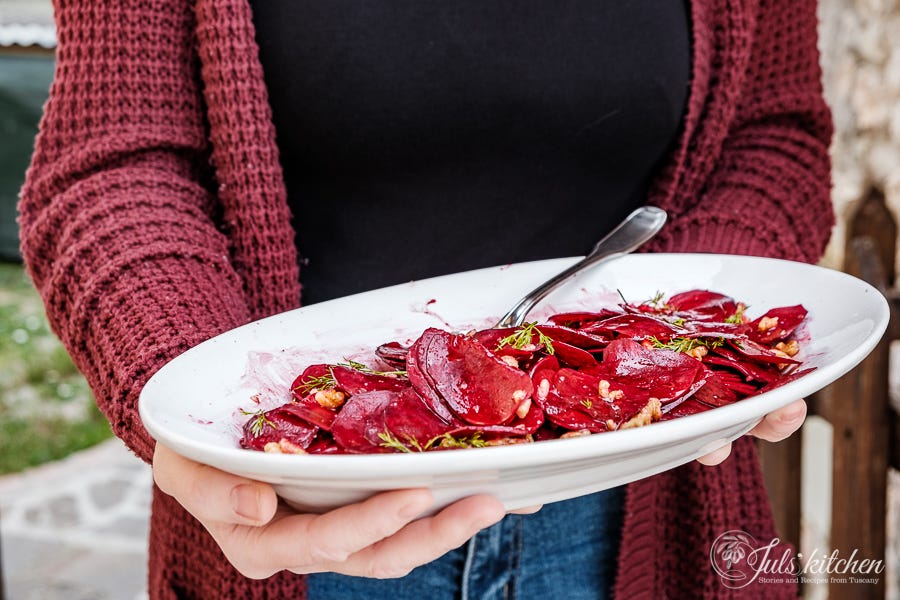
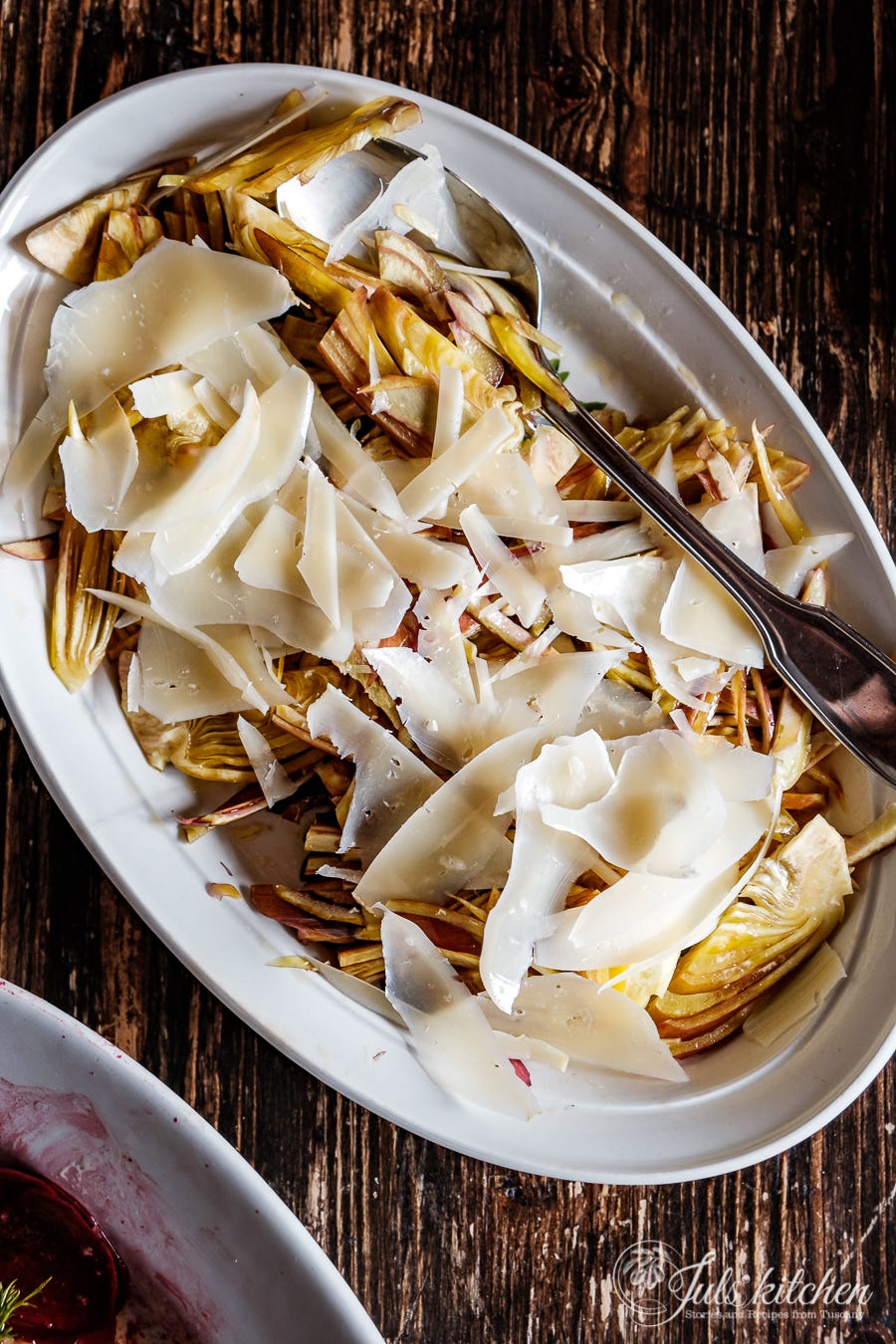



I like this approach of putting together a whole menu very helpful. Please continue doing this!
All good advice and ideas. Thank you.